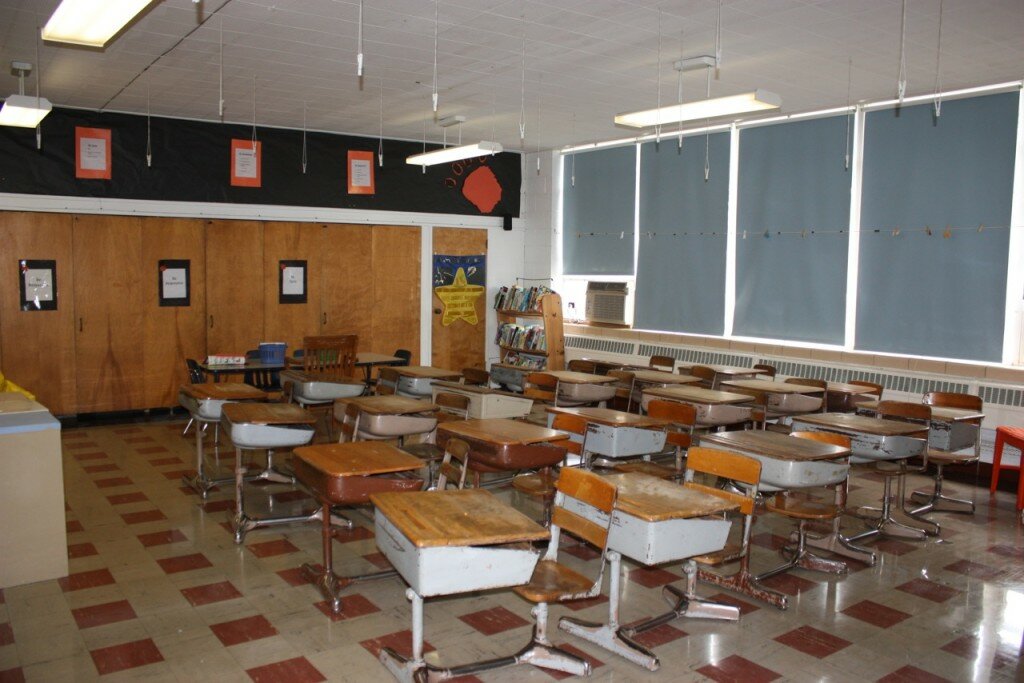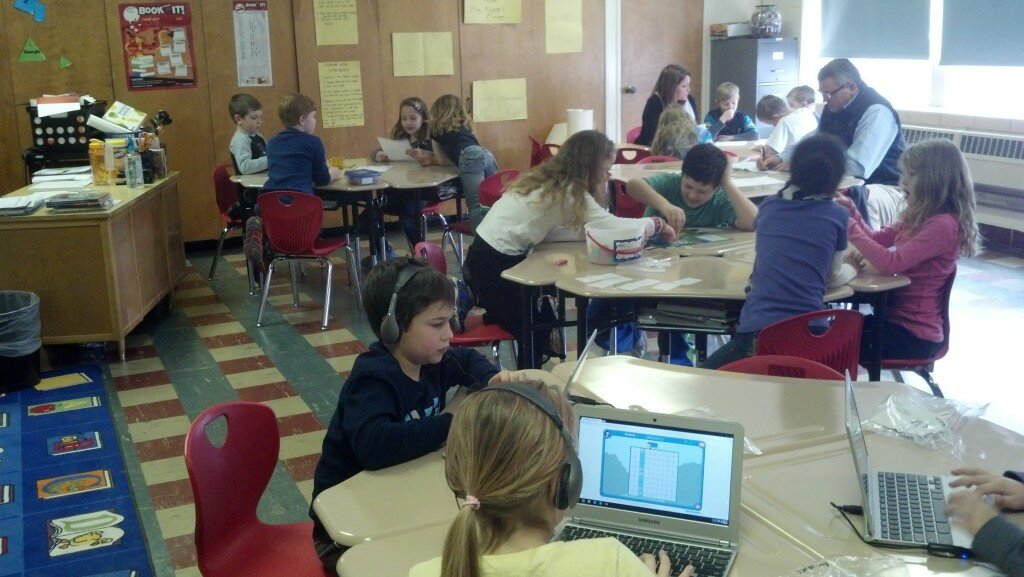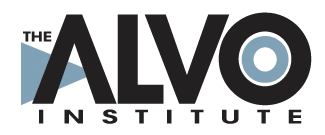By Chase Davenport
Managing Director of Instructional Design and Evaluation, The Alvo Institute
 Alvo has had the good fortune to support a small rural school district in Hamilton County Illinois in its transition from a traditional structure to blended learning. With a pilot group of experienced teachers, there has been rapid transformation. As the pictures illustrate, gone are the neat rows of individual desks facing the front of the classroom in anticipation of whole class, direct, lecture-style instruction. In their place are small groups of students engaged in a variety of activities including online computer enhanced instruction.
Alvo has had the good fortune to support a small rural school district in Hamilton County Illinois in its transition from a traditional structure to blended learning. With a pilot group of experienced teachers, there has been rapid transformation. As the pictures illustrate, gone are the neat rows of individual desks facing the front of the classroom in anticipation of whole class, direct, lecture-style instruction. In their place are small groups of students engaged in a variety of activities including online computer enhanced instruction.
As we witness these teachers move from fairly one-dimensional classrooms towards more complex, multifaceted instruction, we see the wonderfully positive disruptive role blended learning can play in reforming traditional education.
One-dimensional Classrooms Stifle
In many schools teacher-centered direct instruction, individual seatwork and traditional testing continue to be the primary means of teaching and learning. Academic success continues to be narrowly defined and while many teachers are dynamic and work hard to engage their students, they often rely on this monolithic, one-dimensional framework.
We need to break this legacy of one-dimensional classrooms and not just because it’s boring. Learning takes place largely through student interaction. It is an active process that involves engagement with material, other students, teachers, etc. One-dimensional classrooms obviously limit opportunity for more constructive interaction but they also have a less obvious, more insidious effect.
Classroom Status: The Unspoken Outcome of One-Dimensional Teaching
Student interaction is influenced by perceived classroom social status. Low perceived status often inhibits interaction, which potentially undermines learning opportunities. Not surprisingly, within classrooms, status results, in part, from opportunities to demonstrate competence.
With a premium on reading and math skills, students who struggle within those domains may see their status diminished. It becomes a bit of a vicious cycle. This is especially true when teachers rely on direct instruction with lots of seatwork and with limited variation in assessments.
Reading provides a good illustration of this. Reading ability is often perceived as an indicator of how smart a student is. We frequently hear teachers refer to their “bright students.” When asked to define “bright,” their response is almost uniformly a “strong reader.”
Classmates are quick to pick up on this designation. Studies have shown that students can rank their classmates’ reading abilities with a high degree of congruence and these rankings often matched or mirrored their teacher’s.
The Ripple Effect of One-Dimensional Teaching
Once status has been established, it is often generalized. A student identified as a good reader is assumed to be good at many subjects/skills. As Elizabeth Cohen writes: “Reading ability is used as an index of how smart a student is. Thus good readers expect to be good at a wide range of school tasks, and poor readers expect to do poorly at just a wide range of school work.”[1]
Students get caught in self-fulfilling prophecies. Perceived or real weakness in one domain, reading in this case, creates expectations of performance in many. This negatively predetermines the quality of interaction and thus potentially undermines the learning opportunity itself.
Blended Learning: Breaking the Cycle of One-Dimensional Learning
Blended learning can help interrupt the cycle. In an effective blended learning classroom, teachers must recognize that there is more than one way to teach and multiple avenues for learning. When blended classrooms create multiple and varied learning activities, students have greater opportunities to demonstrate their competence. Teachers will certainly have more occasions to publically recognize each student’s strengths.
In our own practice, we have seen teachers become reinvigorated, reengaged as they begin to explore a blended learning model. As they break through the traditional structure and experience increased student engagement, we get overwhelmingly positive feedback such as this recently shared observation: “What we have done in the last few months will change my practice forever. I will never go back to the way I used to do things.”
In an age of shifting education policy, this classroom based, teacher focused reform can accelerate learning, enrich academics and reengage teachers and students. It is worth the investment.
Note. If you want to learn more about status and its effect on learning as well as pick up some pragmatic strategies to prevent its negative effect on learning, purchase Elizabeth Cohen’s Designing Groupwork: Strategies for the Heterogeneous Classroom.
Citations
[1] (Cohen, p.30)
Bibliography:
Cohen, E., (1994). Designing Groupwork: Strategies for the Heterogeneous Classroom. New York: Teachers College Press.
